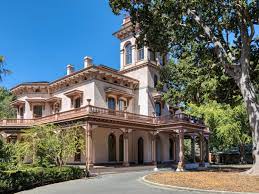Italian-style homes have long been celebrated for their timeless elegance, distinctive architecture, and a sense of Old World charm. Inspired by the rich cultural heritage of Italy, these homes evoke a sense of sophistication and luxury. In this article, we will explore the characteristics, design elements, and enduring allure of Italian-style houses that continue to captivate homeowners seeking a touch of Mediterranean allure.
1. Classic Architectural Elements:
Italian-style homes are renowned for their classic architectural elements that stand as a testament to centuries of artistry and craftsmanship. Prominent features include:
- Red-Tiled Roofs: The iconic red-tiled roofs are a hallmark of Italian architecture, adding warmth and character to the exterior. The terracotta tiles are not only functional but also contribute to the overall aesthetic appeal.
- Stucco Facades: Smooth stucco exteriors, often in warm earthy tones such as cream, beige, or ochre, provide a timeless backdrop. Stucco surfaces not only offer a clean and cohesive look but also withstand the test of time.
- Arched Doorways and Windows: Arched doorways and windows are a defining characteristic of Italian-style homes. These arches impart a sense of grandeur and are often adorned with decorative detailing, showcasing the meticulous craftsmanship.
- Balconies and Terraces: Expansive balconies and terraces are common features, providing residents with outdoor spaces to enjoy the Mediterranean climate. Wrought iron railings or balustrades add a touch of elegance to these outdoor areas.
2. Courtyards and Entryways:
Italian-style homes often feature inviting courtyards and entryways that serve as transitional spaces between the exterior and interior. These areas are adorned with lush greenery, fountains, and cobblestone paving, creating a welcoming ambiance reminiscent of Italian villas.
3. Rustic Materials and Finishes:
Rustic materials and finishes play a crucial role in defining the Italian style. Distressed wood beams, stone accents, and wrought iron details contribute to the rustic charm of these homes. The use of natural materials establishes a connection with the surrounding landscape.
4. Warm and Earthy Color Palette:
The color palette of Italian-style homes is warm and earthy, drawing inspiration from the Mediterranean landscape. Neutral tones such as beige, cream, terracotta, and olive green dominate both the interior and exterior, creating a cohesive and harmonious aesthetic.
5. Interior Design Elements:
Italian-style interiors are characterized by a blend of luxury and simplicity. Key design elements include:
- Tiled Floors: Tiled floors, often in patterns such as herringbone or checkerboard, are a common feature in Italian homes. Terra cotta or stone tiles provide a cool and practical surface that complements the warm climate.
- Vaulted Ceilings with Exposed Beams: Vaulted ceilings with exposed wooden beams are a staple in Italian architecture. This design element adds a sense of grandeur and openness to the interior spaces.
- Frescoes and Murals: Traditional Italian homes may feature frescoes or murals on walls and ceilings, showcasing artistic expression and cultural heritage. These hand-painted details contribute to the overall richness of the interior.
- Wrought Iron Accents: Wrought iron is often used for light fixtures, stair railings, and decorative accents. The intricate designs of wrought iron elements add a touch of sophistication and craftsmanship to the interior.
6. Mediterranean Landscaping:
The landscaping surrounding Italian style homes is an integral part of the overall design. Cypress trees, olive groves, and fragrant herbs contribute to the Mediterranean ambiance. Stone pathways, terraced gardens, and outdoor seating areas enhance the connection between the architecture and the natural surroundings.
7. Emphasis on Outdoor Living:
Italian-style homes prioritize outdoor living spaces, recognizing the value of enjoying the temperate climate. Expansive patios, terraces, and gardens become extensions of the interior, providing residents with opportunities for al fresco dining, entertaining, and relaxation.
8. Tuscan and Mediterranean Influences:
Italian-style homes often draw inspiration from specific regions, with Tuscan and Mediterranean influences being particularly prominent. Tuscan homes are characterized by their rustic simplicity, while Mediterranean homes embrace a fusion of various styles, reflecting the diverse cultures around the Mediterranean Sea.
9. Timeless Elegance and Enduring Appeal:
The enduring appeal of Italian-style homes lies in their timeless elegance. Whether nestled in the hills of Tuscany, overlooking the Amalfi Coast, or gracing the countryside of Umbria, these homes stand as enduring symbols of craftsmanship, cultural richness, and a connection to the natural surroundings.
10. Modern Interpretations of Italian Style:
While traditional Italian-style homes continue to captivate, modern interpretations have emerged, blending classic elements with contemporary design. Clean lines, minimalist interiors, and a fusion of materials showcase the adaptability of Italian style to various design preferences.
11. Practical Considerations for Designing Italian-Style Homes:
- Natural Lighting: Maximize natural lighting to highlight the warmth of earthy tones and showcase architectural details.
- Quality Materials: Use high-quality materials such as natural stone, hardwood, and wrought iron to ensure authenticity and longevity.
- Open Floor Plans: Embrace open floor plans that promote a seamless flow between indoor and outdoor living spaces.
- Meticulous Craftsmanship: Attention to detail and meticulous craftsmanship are essential to achieving the authentic charm of Italian-style homes.
Conclusion:
Italian-style homes, with their timeless elegance and Old World charm, continue to inspire homeowners and designers alike. From the iconic red-tiled roofs to the rustic interiors and emphasis on outdoor living, these homes capture the essence of Mediterranean living. Whether opting for a traditional approach or a modern interpretation, the allure of Italian-style homes lies in their ability to transport residents to a place where history, culture, and natural beauty converge in a harmonious blend of architectural splendor.

